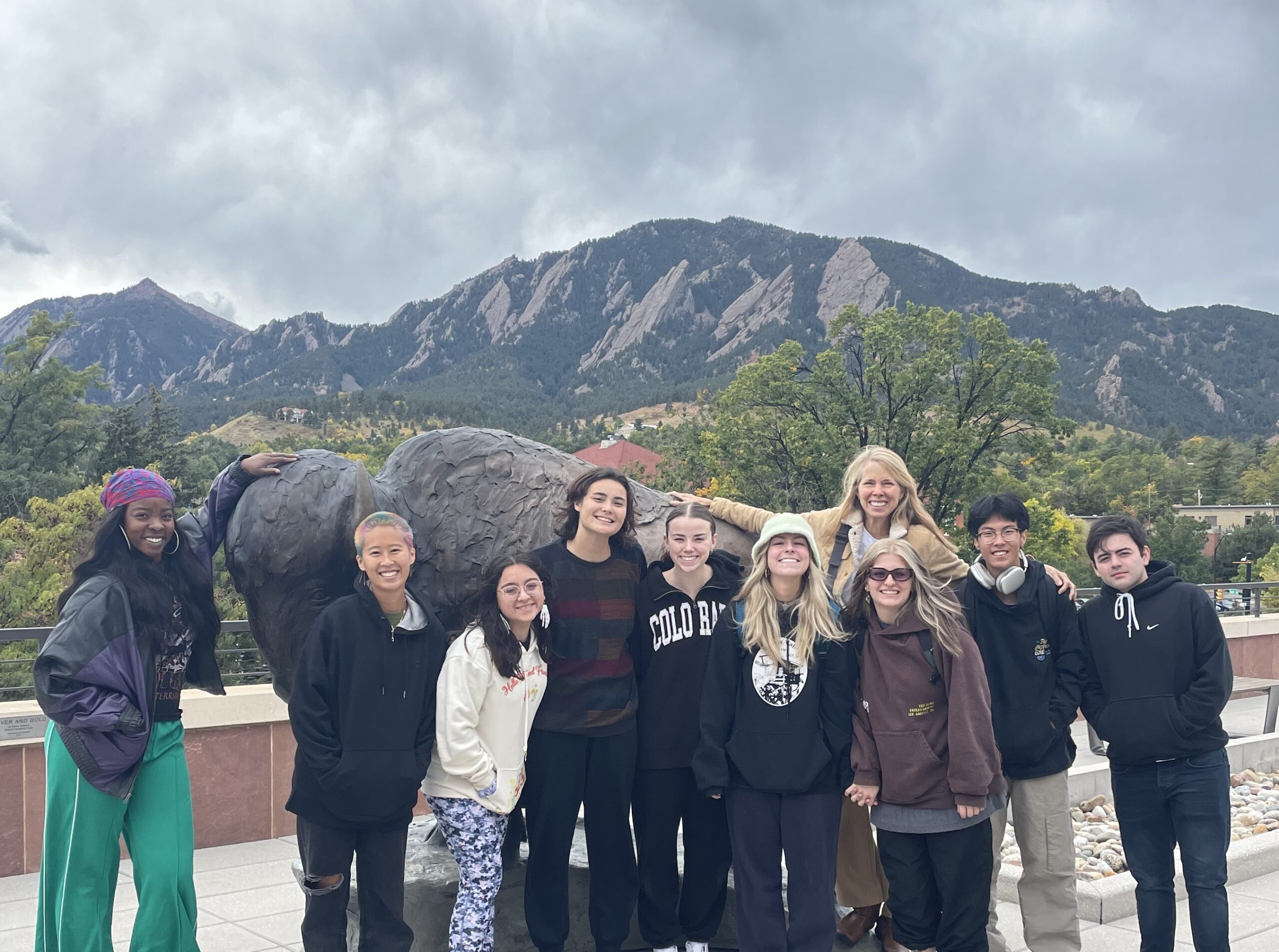Download the PDF version of this workshop here
Engaging Anti-racism through Movement in the Classroom
This workshop is offered by students in Performance for Community Engagement, Department of Theatre and Dance
Thursday Oct. 26, 2023 1-2 PM CASE E390 sponsored by the Center for Teaching and Learning
Description: This fun and active workshop will share easy and practical ways you can integrate movement into your classroom AND engage your students in anti-racism. Systems of oppression thrive on disembodiment. Embodiment is an act of resistance to power structures that divide us from each other, our bodies, and from the natural world. Moving together with purpose is one way we can collectively reclaim multiple ways of knowing and sharing knowledge, ideas, and lived experience. It is not enough for us to be anti-racist in our heads, we need to include the body. In fact, our bodies remember and can imagine what our minds cannot. Learn approaches for inclusive pedagogy through active learning approaches. This participatory workshop will give you lots of ideas for making your classes alive, equitable, and fun!
As people are entering the room for the workshop, ask them to contribute to white boards with the following prompts:
What is racism?*
How does racism show up in the classroom?
How do you feel when you move?
How do you experience freedom in your body through movement?
* What is racism? Could include this on top of that white board.
Racial prejudice + Power (sanctioned by the state) = Racism (from the People’s Institute for Survival and Beyond)
Racial prejudice (intended or not) + Power (conferred by the University) = Racism
-Another thing for on a white board– Caveat on Inclusive Pedagogy— Beyond White Supremacy Culture— What are ways we can make our classrooms places where students can thrive through inclusivity who don’t want to assimilate to white settler institutional cultures that perpetuates racism? How can our classrooms be liberatory spaces celebrating the contributions and cultures of the Global Majority that have been suppressed or erased?
Welcome- Opening (Cassy & Devon)
5-7 mins
(Ask all participants to create a circle standing or in mobility device)
Check in:
- Welcome everyone to Engaging Anti-racism through Movement in the Classroom
- Everyone says names and pronouns + any needs they may be having (ex: limited mobility, not wanting to be touched, emotionally fragile etc.)
-
- After each person says their name, the circle repeats it back to them
For each phrase, someone in the circle creates a gesture and/or sound.
- Gesture and/or sound for “We are here.”
- Gesture and/or sound for “Let’s stir it up.”
- Gesture and/or sound for “We are here together, I see you, and I acknowledge you.”
- Gesture and/or sound for “Let’s begin!”
(Facilitator guides the group in co-creating and rehearsing this opening sequence of gestures and sounds—with each new addition, the rest is repeated to help remember and deepen the physical commitment.)
Two Lines Across from Each Other–Active Movement-based way of Exploring Ideas (Edward & Devon) 5-10 min.
“We’d like to model for you what we are sharing-we have some guiding ideas that guided our work together that we would like to explore through movement. Everyone please form two lines facing a partner. We are going to read some sentences for you and with your partner, you are going to take turns repeating these statements first at a normal tone, then at an exaggerated tone, and finally in slow motion. Me and Edward will demonstrate an example of this for you.” (3 minutes explaining and demo-ing)
(Demo sentence will be “I am here today”)
“Okay now try these with your partners, each will do all 3 tones first and then we will switch.” (5 minutes)
-1st time: Normal
-2nd time: Exaggerated physically and vocally
-3rd time: Slow motion
Systems of oppression thrive on disembodiment.
Engaged pedagogy values student expression.
Discomfort is part of disrupting dominant culture.
Okay, now reflect with your partner for just a few minutes on how that made you feel (2 minutes)
So, given these guiding ideas, in this workshop we will,…
EMBODIMENT-connect to our bodies and each other through movement.
EXPRESSION-provide ideas for supporting student expression.
DISCOMFORT-encourage your courage in staying uncomfortable disrupting dominant culture.
EMBODIMENT (Izzy & Elizabeth) 5-10 min.
Acknowledgement:
Acknowledgement is highly important when you are a person of power in an educator’s position. By initiating acknowledgement you are creating a space where your students are human and recognizing their human experiences. It’s easy to feel invisible in this institution, let your students know they are seen through embodiment and movement.
- Starting Class/Teacher Acknowledgment: Personally take the time to acknowledge your students before class. Look up and down the rows of seats and allow yourself to hold space for the bodies in your classroom. Give acknowledgement that these are your students, and you are holding the power for their learning. What you say during class will matter to them, and will make an impact on their learning.
- Students Acknowledging Students: Initiate your students to acknowledge each other by asking a short discussion question that could be silly to someone who is sitting near them. (Would you rather, this or that) ask them to introduce themselves first. Acknowledge where the lull is, bring the class back together by saying: “Bringing it back in three, two, one…”
- Body Meters: Physically expressing how you feel. Put your hands up super high if you’re feeling really good and energized today, and low to the floor if you’re not feeling the best. Notice where your students are currently at, and take that into account during your lesson.
- Body Refresh: Invite your students to close their eyes if they would like, (this may help with feeling potential judgment or pressure) and choose one of the following methods for body refresh for them to do starting from the top of your head and beginning it down your body. Guide them: Starting with the head, down to the shoulders, the arms, the torso, hips, legs, down to your toes. This is a way to facilitate an embodied learning/expression and renewal and get them into the space to learn.
- Physically wiping/scrubbing away whatever you want to take off. https://vimeo.com/manage/videos/877706435
- Gentle massage or pressure. https://vimeo.com/manage/videos/877708078
- Painting with your fingers, soft brushing. https://vimeo.com/877708686?share=copy
- Patting, waking your body up. https://vimeo.com/manage/videos/877707230
- Physically shaking it out, shake it off! https://vimeo.com/877709827?share=copy
Big stretch! Feel all your muscles. https://vimeo.com/877710669?share=copy
Connecting Students to Each Other Through Movement: Rock Paper Scissors (Becca & Claudia)
Time Estimate: 5-7 mins
The purpose of this exercise is to provide a tangible activity for your classroom to engage students in their bodies and with each other. This is vital to establish a community before tackling more discomforting or intense topics. This activity is also good to boost morale- it encourages students to cheer each other on, learn names, get moving, and work as a team.
To begin with this activity, all that students need to do is introduce themselves to their neighbors and then play a round of rock, paper, scissors. Whichever student wins now will move on to find another player, while the student that didn’t win is now going to be their number one biggest fan. They will follow the player that won and cheer them on. This pattern continues, one student with a team of players behind them cheering them on, will continue playing rock paper scissors against others, and the students who lose will continue to follow them and support them, until there are two teams left.
EXPRESSION
Four Corners (Vianney & Kasra) 10 min.
This activity aims to highlight significant problems of racism within educational settings. How can we effectively emphasize this issue? If you align with a specific perspective, how would you and your like-minded group physically demonstrate this topic?
- What are the Four Corners?
- Power Imbalance
- Unfair treatment between students and educators, which can create an isolating environment.
- Eurocentric Bias
- Many schools historically favor Eurocentric curriculum, leading to unequal opportunities and outcomes for BIPOC students.
- Racial Disparities
- Rules governed by higher authorities can result in a larger gap between underrepresented students.
- Racial Bullying
- The implicit and explicit biases between students, educators, and staff can lead to harm for the person facing the bias, both psychologically and physically.
- Each participant chooses a side based on their own preferences or the current examples.
- Participants should create a physical representation of their chosen concept or idea.
- Participants should cross over each other to discuss and debate their chosen issue, articulating the reasons behind their selections.
- Power Imbalance
DISCOMFORT (Jessica) 5 min
You as a teacher have power. We call upon your leadership to use that power to disrupt racism in our university. As a teacher you are a gatekeeper who can either use that power to perpetuate things as they are OR you can use that power to be an agent of institutional transformation by teaching with anti-racist values and practices.
We share the following to provide a student perspective on anti-racism in the classroom. We appreciate your courage in residing in the discomfort necessary for disrupting dominant culture that perpetuates racism.
Don’t Assume…
What I want teachers to know about their power.
Closing: (reflection on the workshop through movement!) (Belinda) 5 minutes
Education can be a practice of freedom (bell hooks)
(can do all together or in pairs)
What does this feel like when it is true? (express through a frozen image)
What does this feel like when it is not true? (Express through a frozen image)
What does it take for this to be true? (Express through a frozen image)
-If time allows, could do our opening movements again but backwards to signal our closing.
END OF WORKSHOP
Resources:
http://communityperformancetoolbox.org
You can get a free digital copy of the Norton Guide to Equity-Minded Teachinghere: https://seagull.wwnorton.com/equityguide. You can also get a print copy here and its 25% off for educators with code EQUITY25: https://wwnorton.com/books/9780393893717.


